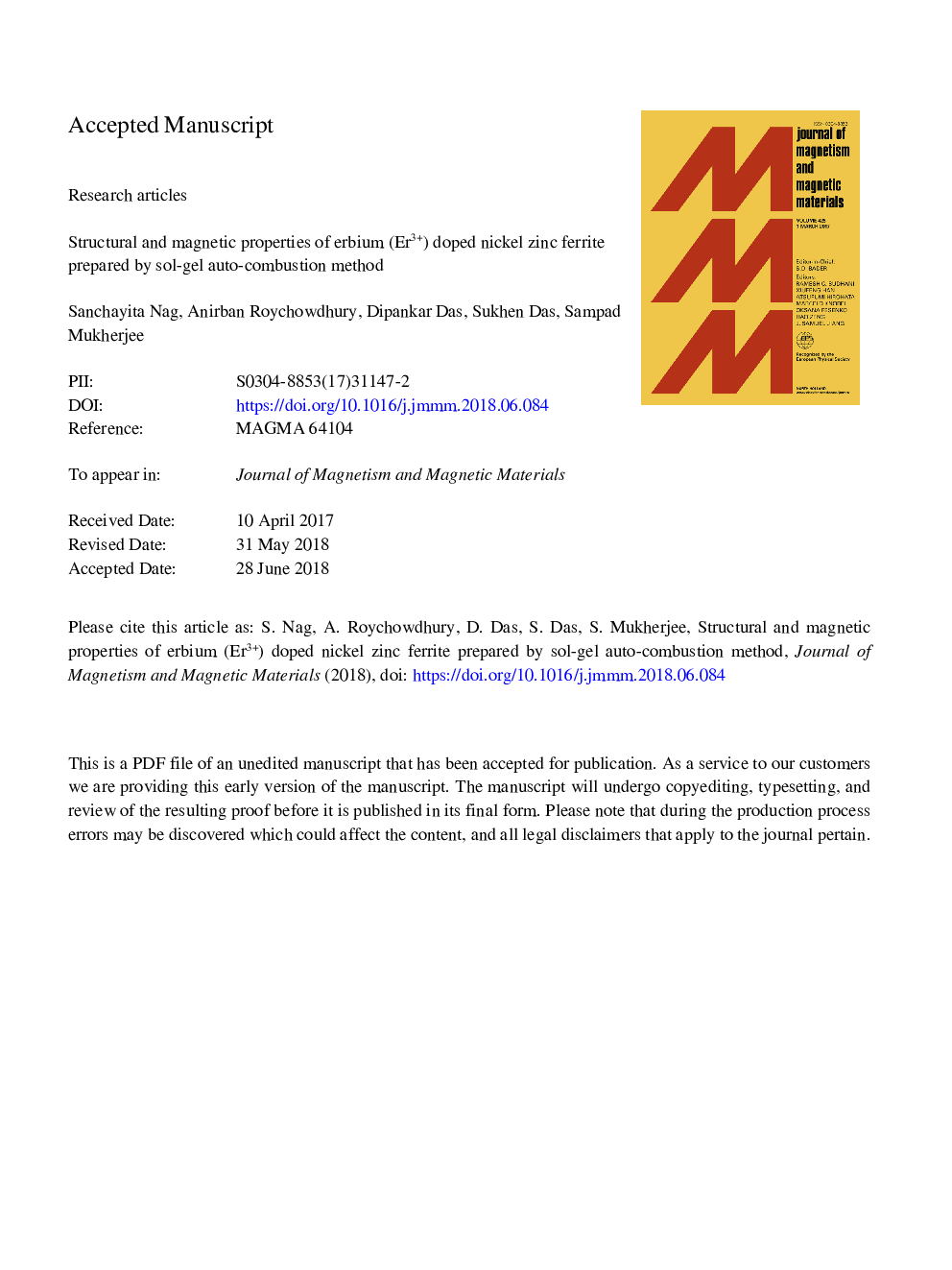| Article ID | Journal | Published Year | Pages | File Type |
|---|---|---|---|---|
| 8152568 | Journal of Magnetism and Magnetic Materials | 2018 | 34 Pages |
Abstract
Single phase, nanocrystalline nickel-zinc ferrite samples, with nominal erbium (Er3+) doping were prepared by the citric acid assisted sol gel auto-combustion method. Samples were characterized by X-ray diffraction, thermo gravimetric analysis, field emission scanning electron microscopic, transmission electron microscopic, Raman spectroscopic and Mössbauer spectroscopic techniques. Transmission electron microscopic images confirmed the inclusion of suitable amount of Er3+ drastically reduced the particle size of the samples from 22â¯nm to 8â¯nm. In room temperature (300â¯k) Mössbauer spectra of the samples with typical dopant concentrations (xâ¯=â¯0.025 and xâ¯=â¯0.035), discrete sextet patterns appeared along with the predominant doublets. Subsequently with higher percentage of Er3+ (xâ¯=â¯0.05) doping, it gets modified into a superparamagnetic doublet. This phenomenon is related to the indirect f-d, direct d-d exchange interactions, as well as to the well known superparamagnetic relaxation of single domain particles. Both room temperature (300â¯K) and low temperature (5K) field dependent magnetic loops (M-H loops) of the samples were recorded using superconducting quantum interference device magnetometer. Almost 63% enhancement of the value of coercivity, (for xâ¯=â¯0.025) is observed. The modifications in magnetic properties of the samples due to addition of rare earth ion has been explained in terms of enhanced anisotropy owing to strong spin-orbit coupling of Er3+ ion and the ferromagnetic core-surface spin canted shell morphology.
Related Topics
Physical Sciences and Engineering
Physics and Astronomy
Condensed Matter Physics
Authors
Sanchayita Nag, Anirban Roychowdhury, Dipankar Das, Sukhen Das, Sampad Mukherjee,
